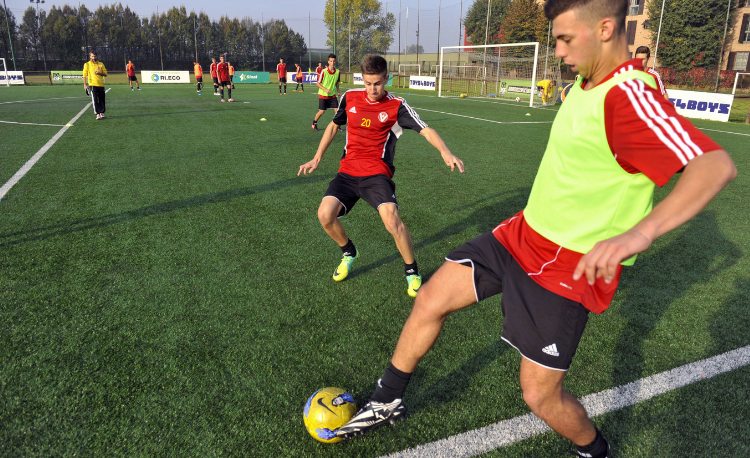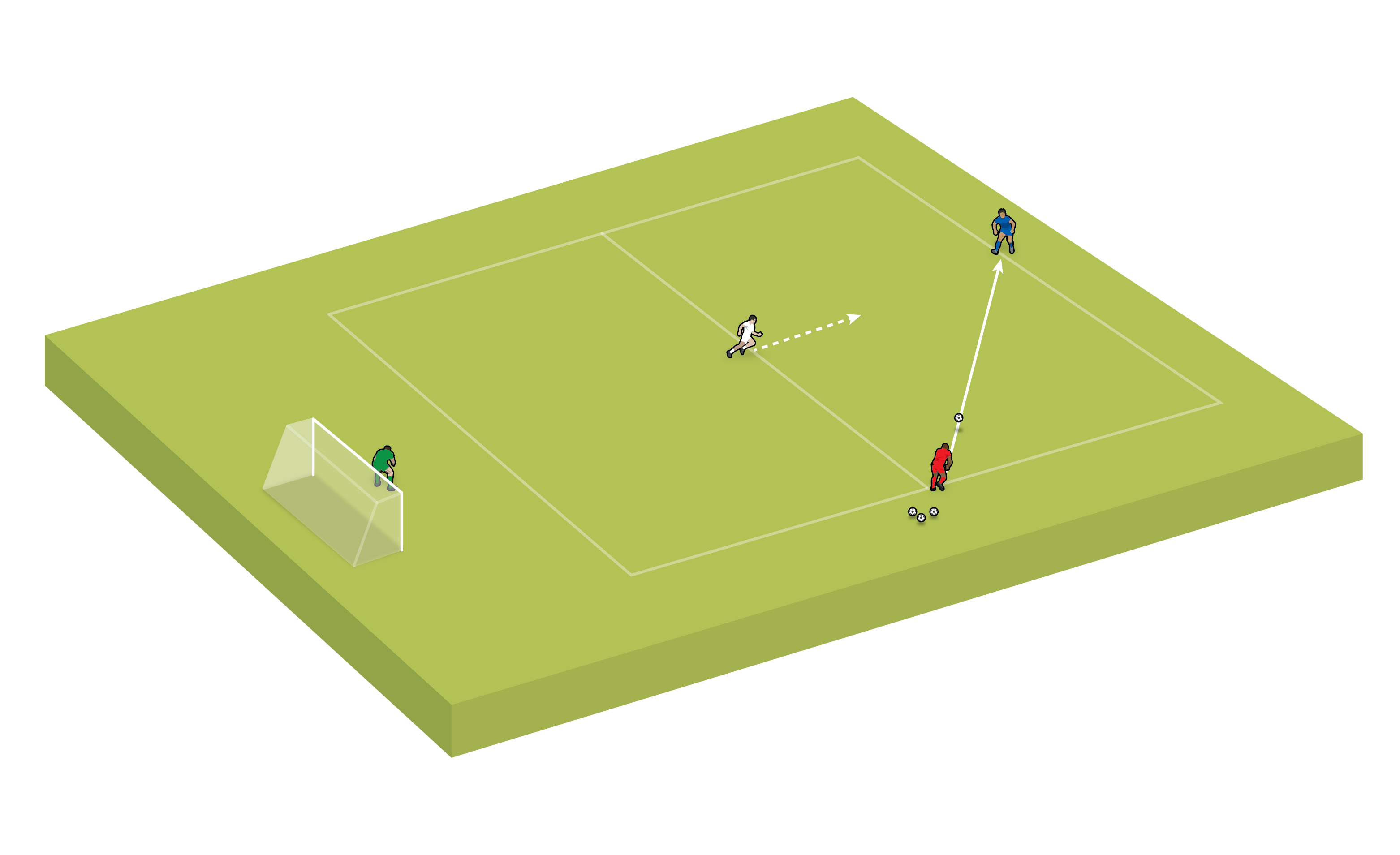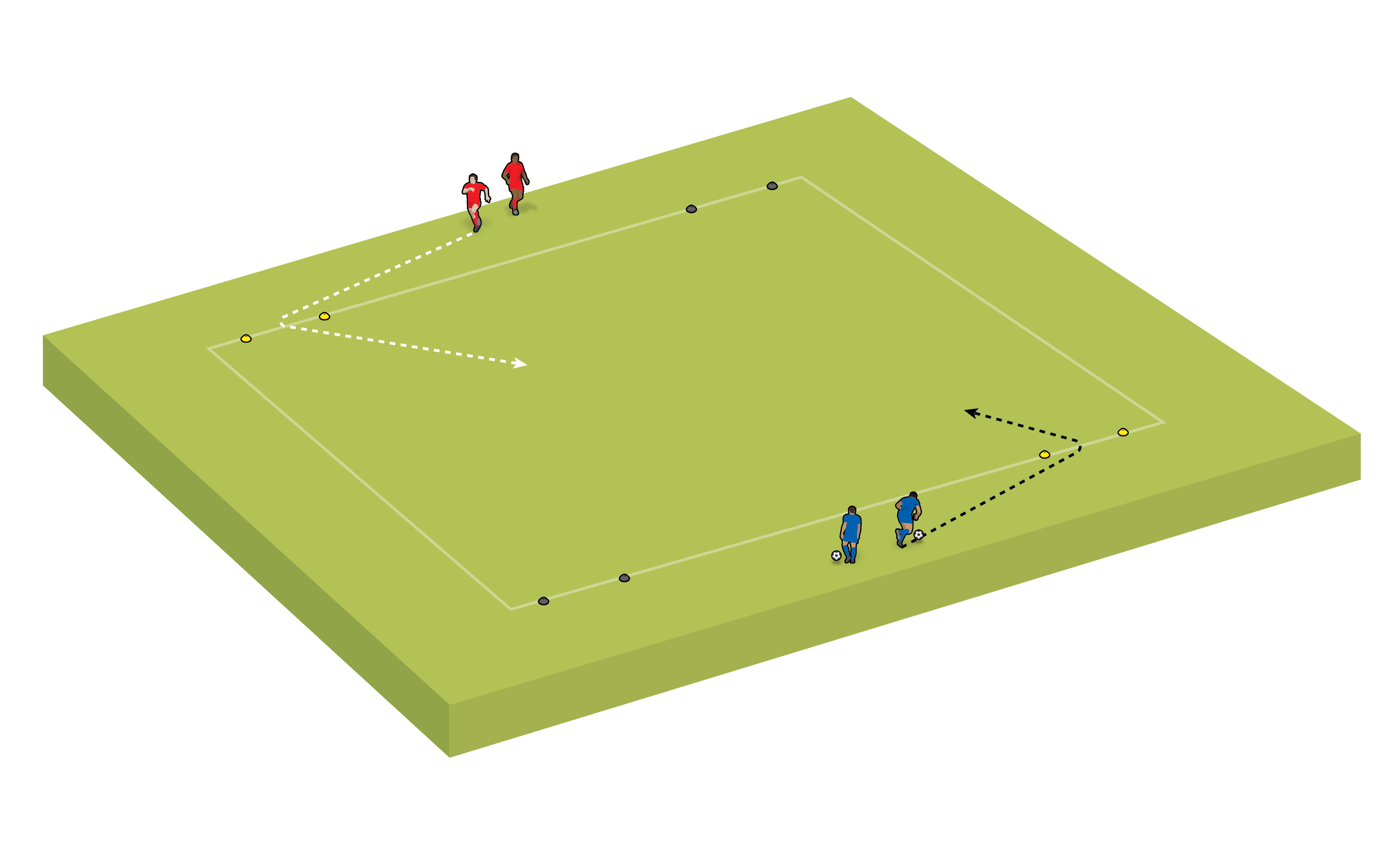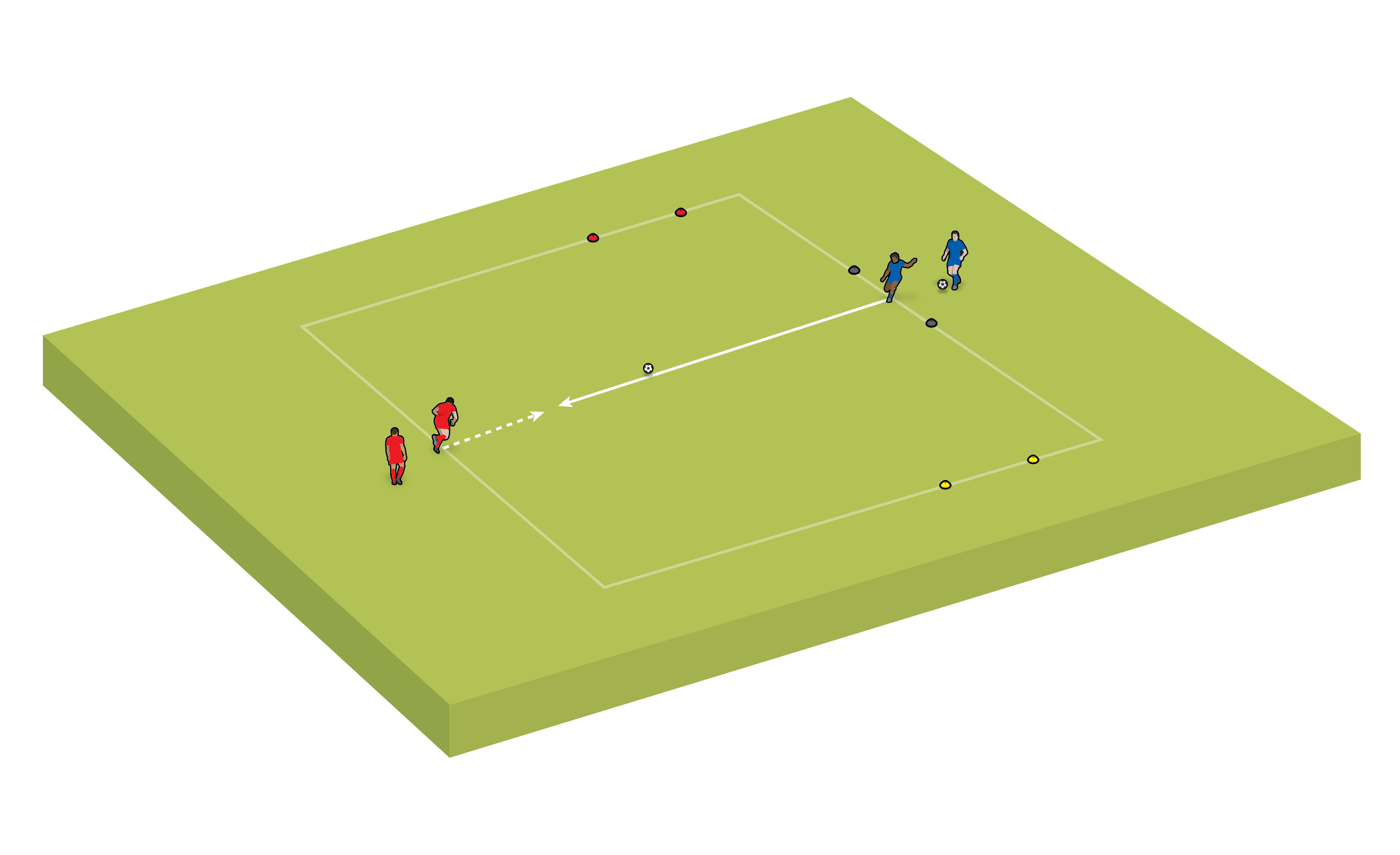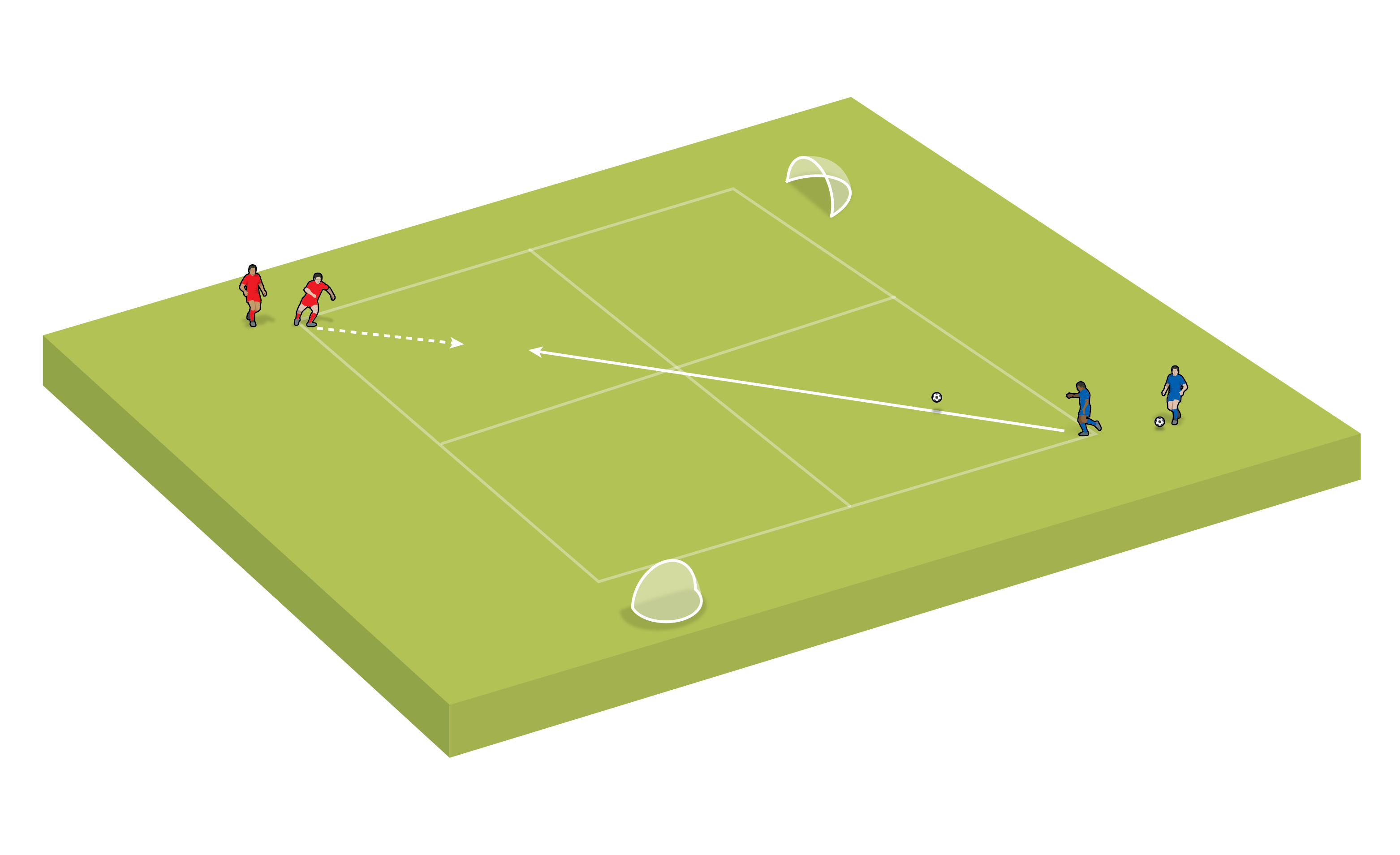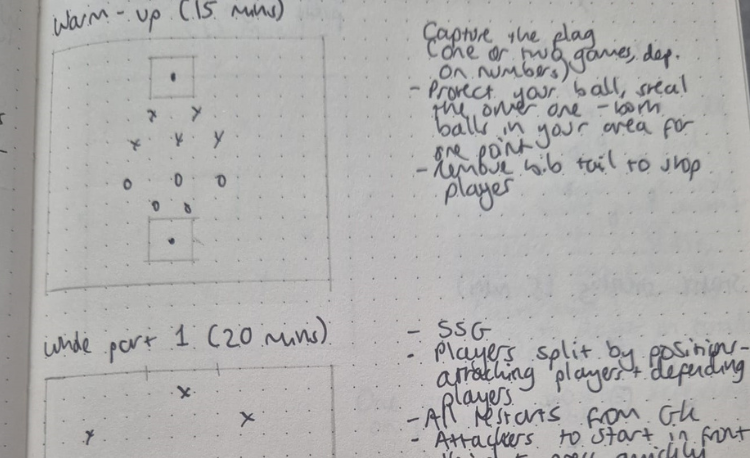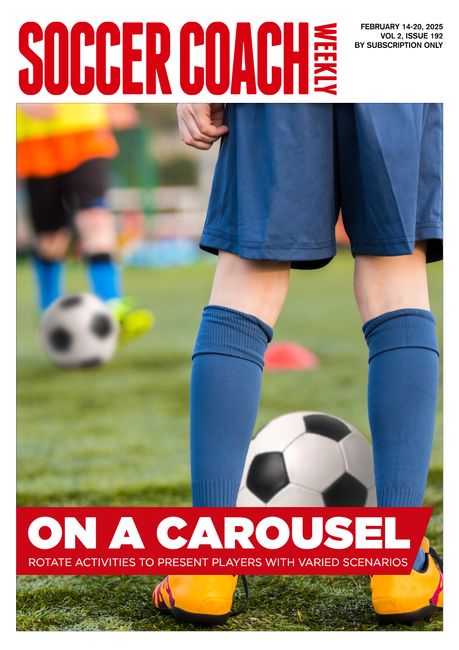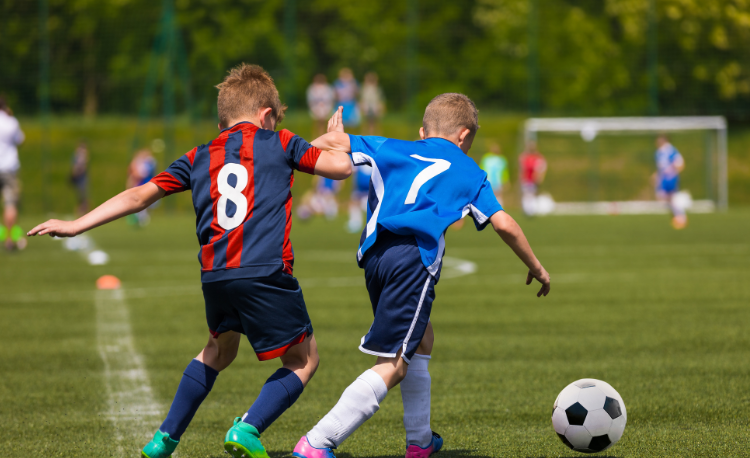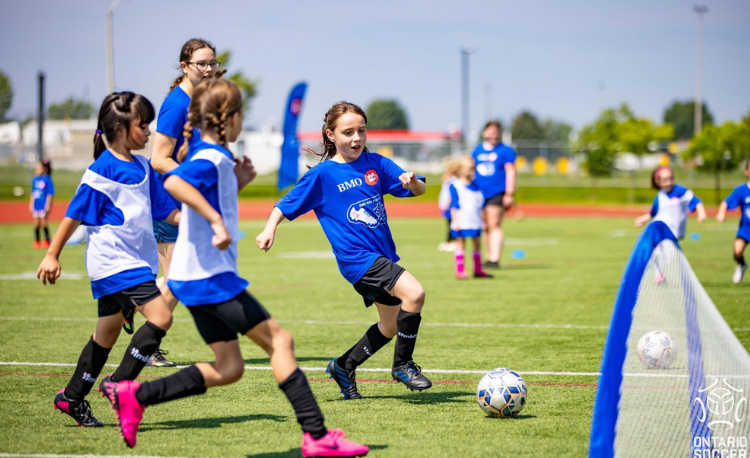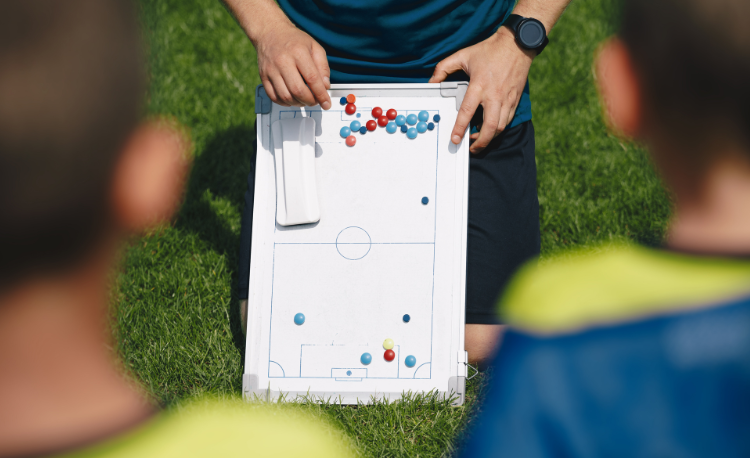Structuring a soccer training session: 'Carousel'
Rotating players around activity stations allows them to be exposed to various scenarios in an overarching topic. Carl Wild outlines the process and benefits.
A ’carousel’ training session involves the players rotating around various small practices, with them spending a number of minutes in each before moving onto the next one.
These small practices can vary in format: unopposed, unopposed with interference, semi-opposed or opposed.
The benefits of using the ’carousel’ format
The main advantage of using a ’carousel’ is that it provides the players with a number of different pictures or scenarios in which they can practice the session focus.
This form of session design can also be really beneficial for developing social aspects of the players and promoting their communication and leadership skills, as it gives them opportunities to take on information and pass it on to their team-mates.
The ’carousel’ format can also be beneficial for teams with a designated goalkeeper. Instead of rotating round all of the different practices like the other players, the ’keeper can remain at one practice, with goalkeeping elements included, allowing them lots of opportunities to work on their specific role.
How to structure a ’carousel’ session
There are two ways in which the coach can approach the planning for a ’carousel’ session.
They can have a clear focus running through all of the practices, such as defending or turning.
Or, each practice can have its own topic – so, for instance the first practice works on the players’ finishing, while the next is all about their dribbling ability.
In all other session formats, the advice is to have a clear focus for the session. This is most beneficial for players’ development, as it provides them with a specific element of the game to concentrate on while they are training.
If we try to give them too much to learn, in such a small space of time, they can end up learning nothing at all.
Therefore, it is recommended that the same approach is used within a ’carousel’ format – aim to stick to one focus across all of the practices.
You can adjust the number of practices, depending on the time within your session, but it is advisable to include a maximum of four different practices. This is to keep set-up and explanation time to a minimum.
Players can be split into groups. It’s important to note that the number of groups does not have to match the number of practices. It is okay to have one or two empty practices on each rotation.
Similarly, groups do not need to be of the same number. They can also be split intentionally – for example, mixed ability, matched ability or different units.
Time can be spent equally on each practice, or a certain group can spend longer on one practice than another.
As with most session formats, once the players have completed a full rotation around all of the different practices, the session can finish with a game.
As always, when doing this, it is recommended that the game starts with some sort of focus on the session topic.
Typically, a ’carousel’ session will be structured as follows:
1. Rotation around practices
Groups rotate around the various practices which have a focus on a singular topic, yet allow it to be explored in different ways.
Coaching points across these practices will be similar, yet may have slight variation, depending on the task at hand.
2. Game
Players play a game where they will get a further opportunity to practise the focus of the session.
To help with this, we can add rules, constraints or a scoring system to the game that encourages, or even forces, the players to complete the learning focus, more often than they usually would.
These rules, constraints or scoring systems can be removed part way through the game to allow for free play, with the session topic still fresh in the players’ minds. This game is the main tool that is used to consolidate the players’ learning from the session.
Moving between practices
Consider the flow between the practices. It makes sense for groups to move clockwise, or anti-clockwise, for example, rather than at random.
It also makes sense for players to leave any equipment, such as balls or bibs, at the practice station, rather than take it with them. Rotating between practices may also be a good time to have a quick drinks break.
To help players understand what they have to do in the next practice, one player from each group can stay, as the others rotate, to explain to the new group what is happening.
After this, they rejoin their original group in their new practice, where one of the group members will need to pass on the rules of that activity.
The coach can also be creative at the start in how they give the first group in each practice the information they need to understand what they need to do and then pass on to the next group.
This could be written down for one group member to read out to the rest of the group; they could tell a group member, who then relays it back to the rest of the group; or, they could even get the group to choose the content of the practice themselves.
Example coaching points in a ’carousel’ session
Taking a session with a focus on dribbling to beat a defender as an example, we may approach it as follows:
- Each practice has some consistent elements which focus on dribbling to beat a defender, allowing the players to develop key skills to focus on. These include:
- Using some form of deception to get past the defender to create at least enough space to complete another action, such as a shot on goal.
- Keeping close control of the ball, using all parts of both feet. - While consistent with the topic, each practice provides the players with a different picture, challenge or problem to solve. This is achieved by making changes to a number of elements of the practice design and set-up. For instance:
- The starting position of the players: where will the defender press from?
- Where is the attacking player aiming to get to?
- What do they have to do when they get there?
- What shape is the playing area?
- How much space is there within the area - The session finishes with a game where the players are encouraged to dribble more than they usually would in a regular game, and replicate some of the scenarios players found themselves in while participating in the carousel practices.
One way to do this could be to limit teams to a set number of passes, such as two or three. Doing so encourages players to only pass the ball when they really need to (therefore they will dribble instead) or forces them to dribble if, when they receive the ball, the team has run out of passes.
’CAROUSEL’ STRUCTURE: AT A GLANCE
Advantages
-
Provides the players with a range of scenarios to practise the focus of the session
-
Helps to keep young players with short attention spans engaged throughout the session
-
Can provide the goalkeeper with some relevant and specific training for them
Disadvantages
-
The initial set-up can be quite substantial
-
Can be quite challenging to manage on your own
Related Files
Newsletter Sign Up
Coaches Testimonials

Gerald Kearney, Downtown Las Vegas Soccer Club

Paul Butler, Florida, USA

Rick Shields, Springboro, USA

Tony Green, Pierrefonds Titans, Quebec, Canada
Subscribe Today
Discover the simple way to become a more effective, more successful soccer coach
In a recent survey 89% of subscribers said Soccer Coach Weekly makes them more confident, 91% said Soccer Coach Weekly makes them a more effective coach and 93% said Soccer Coach Weekly makes them more inspired.
*includes 3 coaching manuals
Get Weekly Inspiration
All the latest techniques and approaches
Soccer Coach Weekly offers proven and easy to use soccer drills, coaching sessions, practice plans, small-sided games, warm-ups, training tips and advice.
We've been at the cutting edge of soccer coaching since we launched in 2007, creating resources for the grassroots youth coach, following best practice from around the world and insights from the professional game.
